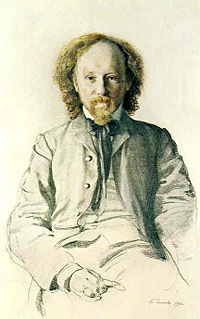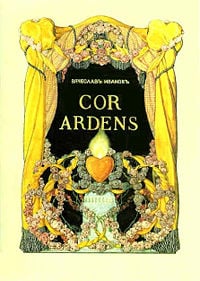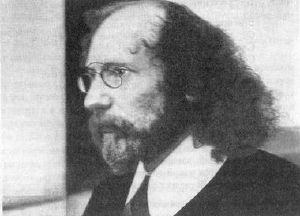Encyclopedia, Difference between revisions of "Vyacheslav Ivanov" - New World
(add biography) |
|||
| Line 6: | Line 6: | ||
==Biography== | ==Biography== | ||
| − | Born in [[Moscow]], Ivanov graduated from the First Moscow Gymnasium with a gold medal and entered the [[Moscow University]] where he studied history and philosophy under [[Sir Paul Vinogradoff]]. In [[1886]] he moved to the [[Berlin University]] to study [[Roman law]] and economics under [[Theodor Mommsen]]. During his stay in Germany, he absorbed the thoughts of [[Friedrich Nietzsche]] and German Romantics, notably [[Novalis]] and [[Friedrich Hölderlin]]. | + | Born in [[Moscow]], Ivanov graduated from the First Moscow Gymnasium with a gold medal and entered the [[Moscow University]] where he studied history and philosophy under [[Sir Paul Vinogradoff]]. In [[1886]] he moved to the [[Berlin University]] to study [[Roman law]] and economics under [[Theodor Mommsen]]. During his stay in Germany, he absorbed the thoughts of [[Friedrich Nietzsche]] and German [[Romanticism|Romantics]], notably [[Novalis]] and [[Friedrich Hölderlin]]. |
| − | In [[1893]] Ivanov met [[Lydia Zinovieva-Annibal]], a poet and translator. | + | In [[1893]] Ivanov met [[Lydia Zinovieva-Annibal]], a poet and translator. After both divorced their spouses, they married 5 years later, first settling in [[Athens]], then moving to [[Geneva]], and making pilgrimages to [[Egypt]] and [[Palestine (region)|Palestine]]. During that period, Ivanov frequently visited [[Italy]], where he studied [[Renaissance]] art. The rugged nature of [[Lombardy]] and the [[Alps]] became the subject of his first [[sonnet]]s, which were heavily influenced by the medieval poetry of [[Roman Catholocism|Catholic]] [[mysticism|mystics]]. |
| − | At the turn of the 20th century, Ivanov elaborated his views on the spiritual mission of [[Rome]] and the Ancient Greek cult of [[Dionysus]]. He summed up his Dionysian ideas in the treatise ''The Hellenic Religion of the Suffering God'' (1904), which traces the roots of literary art in general and the art of [[tragedy]] in particular to ancient Dionysian mysteries. [[Image:Somov cor ardens.jpg|200px|thumb|left|Somov's frontispiece for Ivanov's book ''Cor Ardens'' (1907).]] | + | ===Early Career=== |
| + | At the turn of the 20th century, Ivanov elaborated his views on the spiritual mission of [[Rome]] and the [[Ancient Greece|Ancient Greek]] cult of [[Dionysus]]. He summed up his Dionysian ideas in the treatise ''The Hellenic Religion of the Suffering God'' (1904), which traces the roots of literary art in general and the art of [[tragedy]] in particular to ancient Dionysian mysteries. [[Image:Somov cor ardens.jpg|200px|thumb|left|Somov's frontispiece for Ivanov's book ''Cor Ardens'' (1907).]] | ||
| − | Ivanov's first collection, ''Lodestars'', was published in [[1903]]. It contained many of his pieces written a decade earlier and was praised by the leading critics as a new chapter in | + | Ivanov's first collection, ''Lodestars'', was published in [[1903]]. It contained many of his pieces written a decade earlier and was praised by the leading critics as a new chapter in [[Russian Symbolism]]. The poems were compared to [[John Milton|Milton's]] and [[Vasily Trediakovsky|Trediakovsky's]] on account of their detached, calculated archaism. |
In [[1905]] Ivanov made his triumphant return to [[St Petersburg]], where he was much lionized as a foreign curiosity. A turreted house where he and Zinovieva-Annibal settled became the most fashionable literary [[salon (gathering)|salon]] of the era, and was frequented by poets ([[Alexander Blok]]), philosophers ([[Nikolai Berdyayev]]), artists ([[Konstantin Somov]]), and dramatists ([[Vsevolod Meyerhold]]). The latter staged [[Pedro Calderón de la Barca|Calderon]]'s ''Adoration of the Cross'' in Ivanov's house. The poet exerted a formative influence on the [[Acmeism]] movement, whose main tenets were formulated in the turreted house. | In [[1905]] Ivanov made his triumphant return to [[St Petersburg]], where he was much lionized as a foreign curiosity. A turreted house where he and Zinovieva-Annibal settled became the most fashionable literary [[salon (gathering)|salon]] of the era, and was frequented by poets ([[Alexander Blok]]), philosophers ([[Nikolai Berdyayev]]), artists ([[Konstantin Somov]]), and dramatists ([[Vsevolod Meyerhold]]). The latter staged [[Pedro Calderón de la Barca|Calderon]]'s ''Adoration of the Cross'' in Ivanov's house. The poet exerted a formative influence on the [[Acmeism]] movement, whose main tenets were formulated in the turreted house. | ||
| + | ===His wife's death=== | ||
His wife's death in [[1907]] was a great blow to Ivanov. Thereafter the dazzling Byzantine texture of his poetry wore thin, as he insensibly slipped into [[theosophy]] and [[mysticism]]. The poet even claimed to have had a vision of his late wife ordering him to marry the daughter by her first marriage. Indeed, he married this step-daughter in [[1910]]; their son Dmitry was born 2 years later. [[Image:Ivanov vjach 1900.jpg|right|thumb|Vyacheslav Ivanov in [[1900]].]] | His wife's death in [[1907]] was a great blow to Ivanov. Thereafter the dazzling Byzantine texture of his poetry wore thin, as he insensibly slipped into [[theosophy]] and [[mysticism]]. The poet even claimed to have had a vision of his late wife ordering him to marry the daughter by her first marriage. Indeed, he married this step-daughter in [[1910]]; their son Dmitry was born 2 years later. [[Image:Ivanov vjach 1900.jpg|right|thumb|Vyacheslav Ivanov in [[1900]].]] | ||
Revision as of 02:55, 6 August 2007
Vyacheslav Ivanovich Ivanov (Russian: Вячеслав Иванович Иванов) (February 16 (28), 1866–July 16, 1949) was a Russian poet and playwright associated with the movement of Russian Symbolism. He was also a philosopher, translator, and literary critic.
Biography
Born in Moscow, Ivanov graduated from the First Moscow Gymnasium with a gold medal and entered the Moscow University where he studied history and philosophy under Sir Paul Vinogradoff. In 1886 he moved to the Berlin University to study Roman law and economics under Theodor Mommsen. During his stay in Germany, he absorbed the thoughts of Friedrich Nietzsche and German Romantics, notably Novalis and Friedrich Hölderlin.
In 1893 Ivanov met Lydia Zinovieva-Annibal, a poet and translator. After both divorced their spouses, they married 5 years later, first settling in Athens, then moving to Geneva, and making pilgrimages to Egypt and Palestine. During that period, Ivanov frequently visited Italy, where he studied Renaissance art. The rugged nature of Lombardy and the Alps became the subject of his first sonnets, which were heavily influenced by the medieval poetry of Catholic mystics.
Early Career
At the turn of the 20th century, Ivanov elaborated his views on the spiritual mission of Rome and the Ancient Greek cult of Dionysus. He summed up his Dionysian ideas in the treatise The Hellenic Religion of the Suffering God (1904), which traces the roots of literary art in general and the art of tragedy in particular to ancient Dionysian mysteries.
Ivanov's first collection, Lodestars, was published in 1903. It contained many of his pieces written a decade earlier and was praised by the leading critics as a new chapter in Russian Symbolism. The poems were compared to Milton's and Trediakovsky's on account of their detached, calculated archaism.
In 1905 Ivanov made his triumphant return to St Petersburg, where he was much lionized as a foreign curiosity. A turreted house where he and Zinovieva-Annibal settled became the most fashionable literary salon of the era, and was frequented by poets (Alexander Blok), philosophers (Nikolai Berdyayev), artists (Konstantin Somov), and dramatists (Vsevolod Meyerhold). The latter staged Calderon's Adoration of the Cross in Ivanov's house. The poet exerted a formative influence on the Acmeism movement, whose main tenets were formulated in the turreted house.
His wife's death
His wife's death in 1907 was a great blow to Ivanov. Thereafter the dazzling Byzantine texture of his poetry wore thin, as he insensibly slipped into theosophy and mysticism. The poet even claimed to have had a vision of his late wife ordering him to marry the daughter by her first marriage. Indeed, he married this step-daughter in 1910; their son Dmitry was born 2 years later.
Upon their return from an Italian voyage (1912-13), Ivanov made the acquaintances of art critic Mikhail Gershenzon, philosopher Sergei Bulgakov, and composer Alexander Scriabin. He elaborated many of his Symbolist theories in a series of articles, which were finally revised and reissued as Simbolismo in 1936. At that time, he relinquished poetry in favour of translating the works of Sappho, Alcaeus, Eschylus, and Petrarch.
In the abysmal years following the revolution, Ivanov concentrated on his scholarly work and completed a treatise on Dionysus and Early Dionysianism (1921), which earned him a Ph.D. degree in philology. The new Communist government didn't allow him to travel outside Russia until 1924, when he went to deliver lectures on classical philology at the Baku University. From Azerbaijan he proceeded to Italy, where he settled in Rome, finally converting to Roman Catholicism in 1926. His last collections of verse were the Roman Sonnets (1924) and the Roman Diary (1944). Many other poems appeared posthumously.
Ivanov died in Rome in 1949 and was interred at the Cimitero Acattolico, not far from the graves of Karl Briullov and Alexander Ivanov.
Credits
New World Encyclopedia writers and editors rewrote and completed the Wikipedia article in accordance with New World Encyclopedia standards. This article abides by terms of the Creative Commons CC-by-sa 3.0 License (CC-by-sa), which may be used and disseminated with proper attribution. Credit is due under the terms of this license that can reference both the New World Encyclopedia contributors and the selfless volunteer contributors of the Wikimedia Foundation. To cite this article click here for a list of acceptable citing formats.The history of earlier contributions by wikipedians is accessible to researchers here:
The history of this article since it was imported to New World Encyclopedia:
Note: Some restrictions may apply to use of individual images which are separately licensed.


